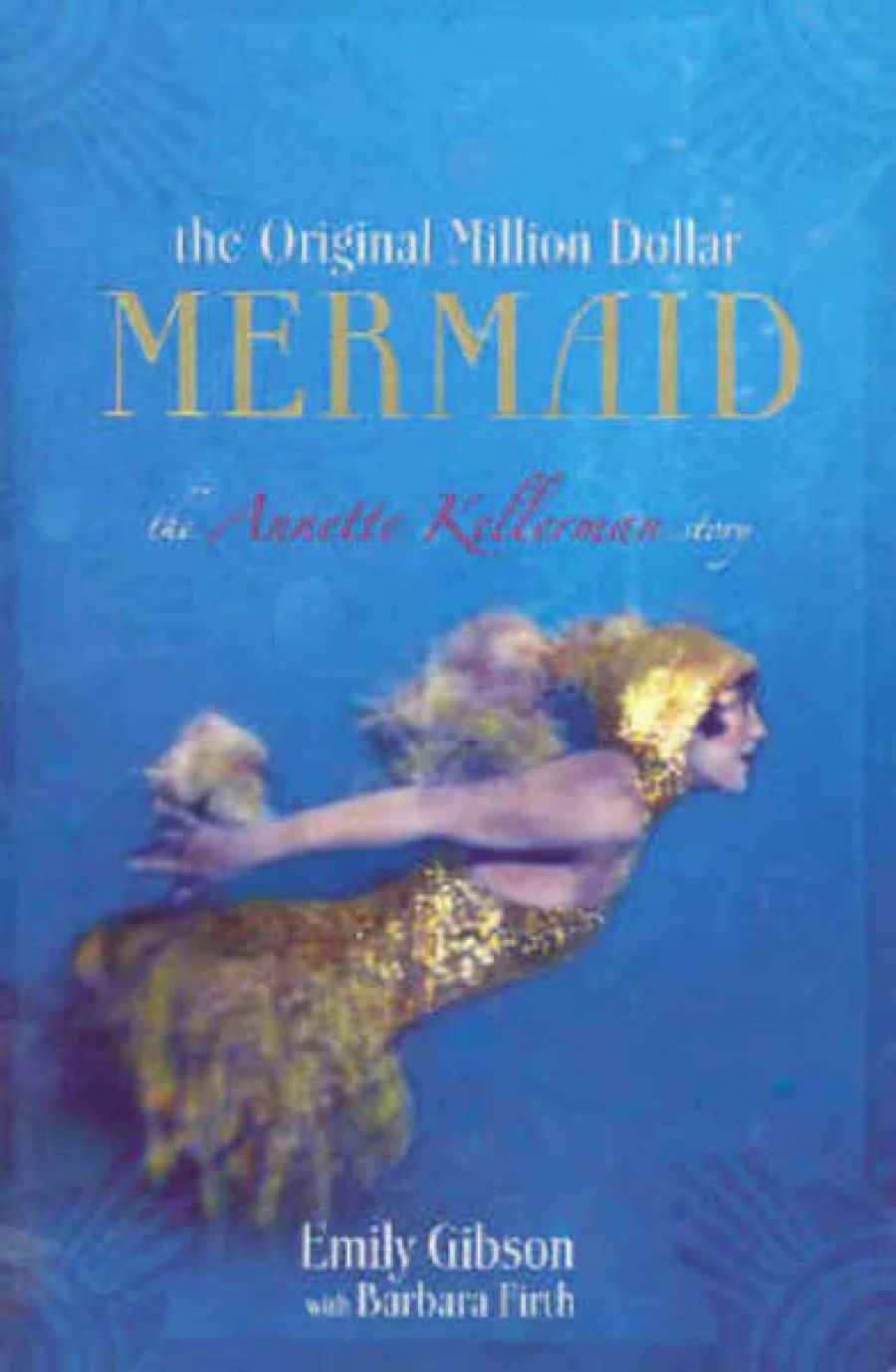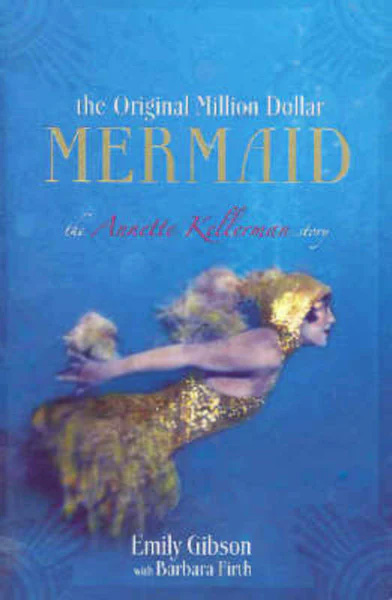
- Free Article: No
- Contents Category: Biography
- Review Article: Yes
- Article Title: Flaunting your perfections
- Online Only: No
- Custom Highlight Text:
There is something peculiarly off-putting about a book whose opening sentence reeks of inaccuracy: ‘In 1952, the first Technicolor water spectacular film The Million Dollar Mermaid thrilled the movie-going world.’ I am not talking about anything arcane here; just the sort of factual stuff anyone can check on the Internet. Esther Williams, star of Mermaid, the Annette Kellerman biopic, had appeared in about ten films since Bathing Beauty (1944) that might have qualified as ‘water spectacular films’. Not to harp, but one’s confidence is further undermined in the foreword by co-author Barbara Firth’s uninflected boast that in 1964 she ‘was invited to join the Ladies Committee of the Sydney Opera House Appeal Fund, which was at that time the most prestigious committee in Sydney’, rising in time to be its ‘honorary public relations officer’.
- Book 1 Title: The Original Million Dollar Mermaid
- Book 1 Subtitle: The Annette Kellerman story
- Book 1 Biblio: Allen & Unwin, $29.95 pb, 230 pp
- Book 1 Cover Small (400 x 600):

- Book 1 Cover (800 x 1200):

None of this bodes well. There may well be material for a serious, even inspirational, biography of Kellerman, but this is not it. She was certainly a notable swimmer, overcoming infant rickets and leg braces, with steely determination; and no doubt it took tenacity to achieve what she did. She found success on three continents, as a champion swimmer and diver, and as the inventor of the one-piece bathing costume, which sought, like her aquatic displays, to combine the sexually provocative with the impeccably artistic. She had a brief popular career in silent films, and a fleeting resurgence of her réclame in her native Australia during World War II.
How likeable does she seem to have been? On the basis of this soppy biography, not very. There is the potential for local-girl-made-good, triumphing over setbacks, but there is ultimately, or even early on, something wearisome in her relentless quest for new ‘challenges’. Apart from her aquatic skills, she tries her hand (and the rest of her famously revealed body) at ballet, motoring, tennis (a pro accompanied her on tour during this craze), highwire-walking, singing and, ill-advisedly, buckjumping. She is even said to have written books, though there is no evidence of her ever sitting still long enough to read one. She’s a real goer, and no mistake. If it weren’t such a terrible thing to say about anyone, I’d say she saw herself as ‘feisty’.
During all this non-stop activity, she is partnered by Jimmie L. Sullivan, at first her manager as she embarks on a career on the vaudeville circuits, then as her long-suffering husband. While she is away from him in England, she realises ‘how “really grand” Jimmie was. She remembered all the kind sweet things he’d done for her.’ Thus, in the language of Mills & Boon, is their sixty-year-long marriage ushered in, and it never gets any better. No cliché is left interred: ‘It was a classic example of opposites attracting’; ‘They look happy but it’s obvious she’s the boss’; and so on, as she drags the quiescent Jimmie in her wake. At one point, he is asked what it was like being married to her, famous as she then was, and he is loyal and discreet. Personally, I wouldn’t have risked lunch with her, let alone marriage.
Her film career embraced what sound like some of the silliest films ever made. For the most part, they have been ‘lost’, as has so much early cinema, so one has to rely on the second-hand accounts offered of such epics as Neptune’s Daughter (1914); the ridiculous-sounding Daughter of the Gods (1916), in which she is attacked by an army of gnomes, jumps into a pool of ‘slavering, open-mouthed crocodiles’ and falls in full armour from a horse into the sea; and Queen of the Sea (1918), in which she is chained in a dungeon, attacked by live ferrets and escapes death from revolving knives. And she has the nerve to be critical of the Esther Williams biopic!
Kellerman’s kind of film, and her kind of star, had finished its vogue by the 1920s, but she seems to have become locked into the idea of celebrity and to have found it hard to be out of the limelight. She stopped at nothing, even writing (deplorable) songs to entertain an uncritical audience of troops in the early 1940s. Much of her life sounds absurd, at least in the coy, cliché-ridden style of this biography. It is sparing in the matter of sources; much of it reads like fanzine speculation resting on the flimsiest evidence, some of it provided by Annette’s own memoir (unpublished, and one sees why). It is carelessly proofed (‘humourous’ etc.), is slack about following up potentially interesting figures such as the director Herbert Brenon, with whom she quarrelled (my heart went out to him) and who went on to a long career, and it never brings to bear on Annette’s tiring and tiresome exploits any of the assessing rigour it so sorely needs.
It’s as though we’re asked to accept Annette at her own valuation of herself, whether or not she’s actually being quoted. Let her, then, have the last word, in this bit of puff from an ‘unknown’ newspaper: ‘Being the perfect woman antagonises other women. You can’t be superior with them. You must be on their plane. They don’t like to think you’re flaunting your perfections at them.’ Gosh, how true.


Comments powered by CComment